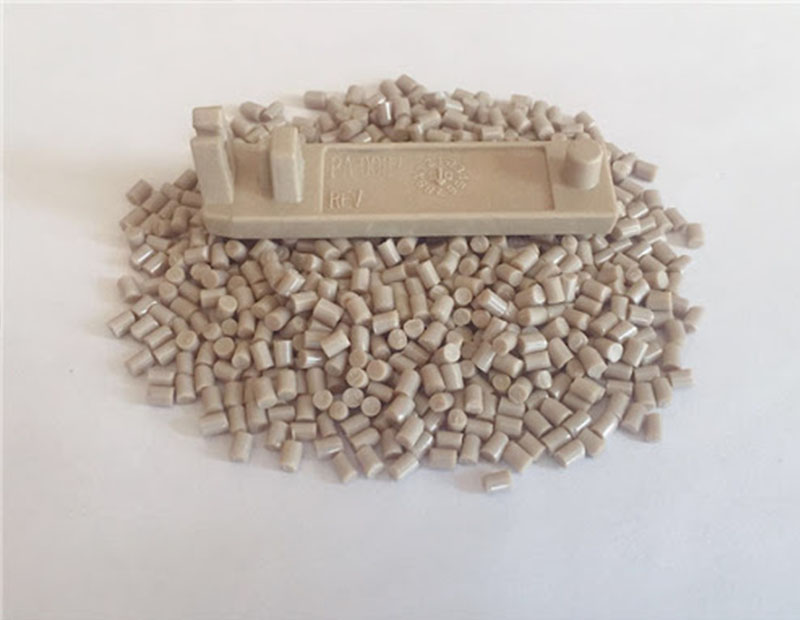What is High-Performance PEEK Plastic?
Polyether Ether Ketone (PEEK) is a High-performance thermoplastic polymer renowned for its exceptional mechanical, thermal, and chemical resistance properties. PEEK exhibits a unique combination of characteristics that make it indispensable in demanding engineering applications. Key properties include:
Tensile Strength: 90-100 MPa at room temperature, maintaining 70% strength retention at 200°C
Continuous Service Temperature: 250°C (482°F) with short-term exposure up to 300°C (572°F)
Flexural Modulus: 3.6 GPa at 23°C, with only 50% reduction at 200°C
Chemical Resistance: Exceptional resistance to organic solvents, acids, and bases with less than 1% weight gain after 24-hour immersion in most chemicals
Wear Resistance: Coefficient of friction as low as 0.35 against steel with PV limits exceeding 3 MPa·m/s
PEEK demonstrates V-0 flammability rating per UL94 with extremely low smoke emission (<0.1% opacity) and toxicity, making it ideal for aerospace and transportation applications.

Key Applications of High-Performance PEEK
Aerospace Components
PEEK replaces metal in aircraft components such as bushings, bearings, and structural clips, offering 40-50% weight reduction while maintaining mechanical integrity at altitudes with temperatures reaching -55°C (-67°F). Its inherent flame retardancy meets FAA requirements for interior components.
Medical Implants
As a radiolucent material with elastic modulus (3-4 GPa) closely matching human bone, PEEK is used in spinal fusion devices, trauma fixation plates, and dental abutments. Its ISO 10993-1 biocompatibility allows for long-term implantation.
Oil & Gas Equipment
In downhole applications, PEEK seals and back-up rings withstand 15,000 psi (103 MPa) pressures at 200°C (392°F) while resisting H2S and CO2 corrosion. Its 0.02% water absorption prevents dimensional changes in humid environments.
Semiconductor Manufacturing
PEEK's ultra-high purity (metal content <5 ppm) and resistance to plasma etching make it ideal for wafer carriers and robotic end-effectors in cleanrooms. It maintains dimensional stability through 1000+ thermal cycles between -196°C and 300°C.
Industrial Machinery
As bearing cages and wear pads, PEEK operates under PV limits of 3.5 MPa·m/s without lubrication, outperforming PTFE composites by 10× in wear life in abrasive environments.
Proper Maintenance of PEEK Components
Cleaning Procedures
For medical or semiconductor applications, use IPA (isopropyl alcohol) or deionized water at temperatures below 60°C (140°F). Avoid acetone or chlorinated solvents which may cause 0.5-1.5% dimensional swelling.
Thermal Cycling Considerations
When subjecting PEEK to repeated thermal cycles, limit heating/cooling rates to 3-5°C per minute to minimize internal stresses. Annealing at 200°C for 30 minutes per mm thickness improves crystallinity and reduces post-machining deformation.
Mechanical Load Management
Under continuous load, design for 50% of yield strength (45 MPa) at maximum operating temperature. For dynamic applications, maintain surface speeds below 1 m/s without lubrication or 5 m/s with water/grease lubrication.
Storage Conditions
Store PEEK components in low-humidity (<40% RH) environments at 15-25°C (59-77°F). Vacuum-seal machined parts to prevent 0.1-0.3% moisture absorption that could affect tight-tolerance dimensions.
Inspection Protocols
For critical components, perform:
Annual FTIR analysis to detect surface degradation
DSC measurements every 2 years to verify crystallinity remains >30%
Coordinate measurements after 500 thermal cycles to check dimensional stability
Note: PEEK exhibits excellent radiation resistance, maintaining >80% mechanical properties after 1000 kGy gamma irradiation, making it suitable for nuclear applications.






